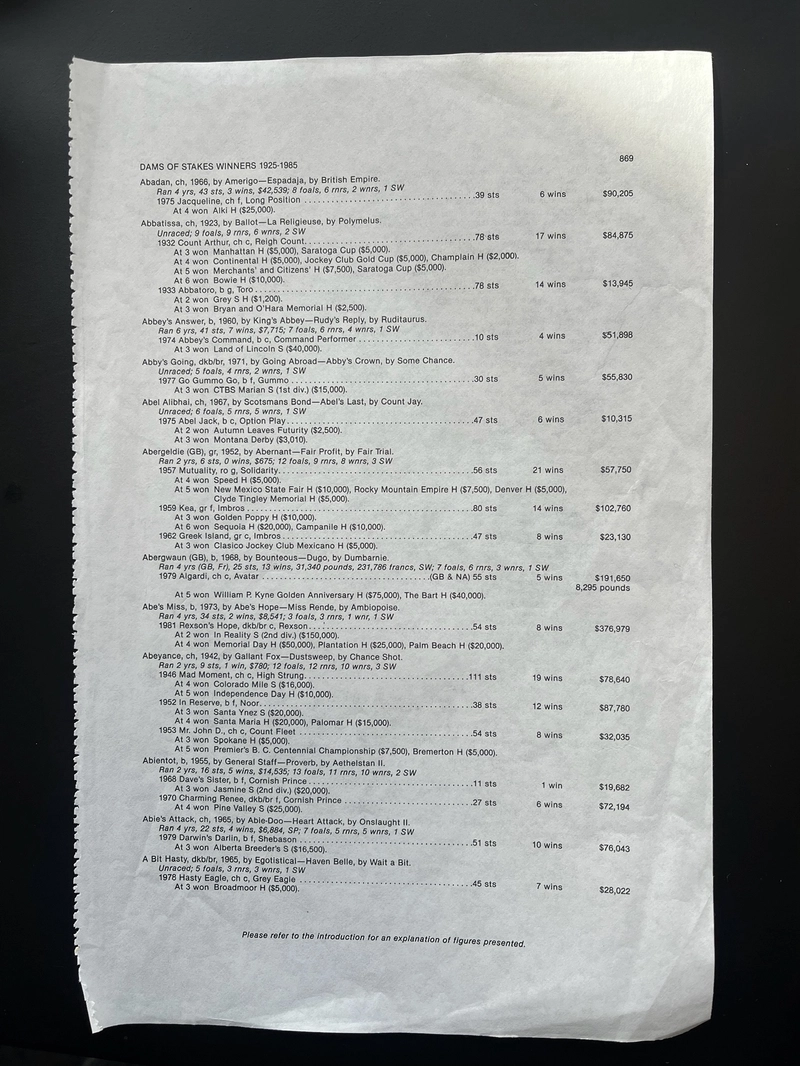Beyond Code: How to Create Beautiful Documentation That Developers Actually Love (Best Practices)
In the world of software development, documentation often feels like an afterthought – a chore relegated to the end of a sprint, or worse, skipped entirely. Yet, ask any developer about their biggest frustrations, and wading through poor, outdated, or non-existent documentation will invariably rank high. Conversely, encountering clear, concise, and well-structured documentation can feel like finding an oasis in a desert – it accelerates understanding, reduces friction, and ultimately makes the development process more enjoyable and productive. The goal isn't just to have documentation; it's to create documentation that developers genuinely appreciate and use. This means going beyond mere functional descriptions to craft resources that are effective, efficient, and yes, even beautiful. Beautiful docs aren't just about aesthetics; they represent a commitment to clarity, usability, and developer experience (DX). They signal that the creators care about the people using their software or APIs. But how do you achieve this documentation nirvana? It requires a thoughtful approach, blending solid writing principles with smart tooling and a developer-centric mindset. Let's dive into the best practices for creating documentation that doesn't just sit on a server, but actively helps developers succeed. 1. Know your Audience (Deeply) Before writing a single word, understand who you're writing for. Are they seasoned veterans or junior developers? Are they internal teams already familiar with your ecosystem, or external users encountering your product for the first time? Consider: Technical Proficiency: Tailor the language and depth of explanation accordingly. Avoid overly simplistic explanations for experts, but don't assume deep domain knowledge for newcomers. Goals: What are they trying to achieve with your software/API? Are they looking for a quick start guide, troubleshooting a specific error, understanding advanced concepts, or integrating with other systems? Structure your docs to answer these specific needs. Context: Where do they typically look for information? Are they comfortable with interactive API explorers, or do they prefer static reference pages? Empathy is key. Put yourself in the developer's shoes. What information would you need, and how would you want it presented? 2. Structure is King: Build a Logical Foundation Even the most accurate content is useless if developers can't find it. Beautiful docs are inherently well-organized. A logical structure provides a mental map, allowing users to navigate intuitively. Clear Hierarchy: Organize content logically, typically starting with introductory concepts (Getting Started, Installation) and moving towards specifics (API Reference, Tutorials, Guides, Troubleshooting). Use clear headings and subheadings (H1, H2, H3) consistently. Table of Contents (TOC): Essential for any non-trivial documentation set. A well-structured, persistent TOC (often in a sidebar) allows users to see the overall layout and jump directly to relevant sections. Search Functionality: A robust, fast, and accurate search bar is non-negotiable. Developers often know what they need but not where it is. Ensure your search indexes content effectively and highlights keywords in results. Cross-Linking: Link related concepts, tutorials, and API references together. If you mention an API endpoint in a guide, link directly to its reference page, and vice-versa. This creates a web of knowledge rather than isolated silos. Information Architecture: Plan the flow. Consider using established frameworks like Diátaxis (Tutorials, How-To Guides, Explanations, Reference) to ensure you cover different learning needs systematically. 3. Content: Clarity, Conciseness, and Examples Reign Supreme The core of your documentation is the content itself. Aim for: Clarity: Use clear, unambiguous language. Avoid jargon where possible, or define it clearly upon first use. Prefer active voice over passive voice ("The function returns X" vs. "X is returned by the function"). Conciseness: Developers are busy. Get to the point. Eliminate fluff and unnecessary words. Use short sentences and paragraphs. Bullet points and numbered lists are excellent for breaking up text and highlighting key information. Accuracy: This is paramount. Inaccurate documentation is worse than no documentation. Establish review processes and ensure docs are updated alongside code changes. Code Examples: Abundant, practical, and correct code examples are vital. Runnable: Provide complete, copy-pasteable examples that work out-of-the-box (including necessary imports or setup). Contextual: Explain what the code does and why it's structured that way. Varied: Show common use cases, edge cases, and error handling. Language Specific: If your API/SDK supports multiple languages, provide examples in each. 4. Focus on Use Cases & Leverage Smart API Tooling Developers don't just want t

In the world of software development, documentation often feels like an afterthought – a chore relegated to the end of a sprint, or worse, skipped entirely. Yet, ask any developer about their biggest frustrations, and wading through poor, outdated, or non-existent documentation will invariably rank high. Conversely, encountering clear, concise, and well-structured documentation can feel like finding an oasis in a desert – it accelerates understanding, reduces friction, and ultimately makes the development process more enjoyable and productive.
The goal isn't just to have documentation; it's to create documentation that developers genuinely appreciate and use. This means going beyond mere functional descriptions to craft resources that are effective, efficient, and yes, even beautiful. Beautiful docs aren't just about aesthetics; they represent a commitment to clarity, usability, and developer experience (DX). They signal that the creators care about the people using their software or APIs.
But how do you achieve this documentation nirvana? It requires a thoughtful approach, blending solid writing principles with smart tooling and a developer-centric mindset. Let's dive into the best practices for creating documentation that doesn't just sit on a server, but actively helps developers succeed.
1. Know your Audience (Deeply)
Before writing a single word, understand who you're writing for. Are they seasoned veterans or junior developers? Are they internal teams already familiar with your ecosystem, or external users encountering your product for the first time? Consider:
- Technical Proficiency: Tailor the language and depth of explanation accordingly. Avoid overly simplistic explanations for experts, but don't assume deep domain knowledge for newcomers.
- Goals: What are they trying to achieve with your software/API? Are they looking for a quick start guide, troubleshooting a specific error, understanding advanced concepts, or integrating with other systems? Structure your docs to answer these specific needs.
- Context: Where do they typically look for information? Are they comfortable with interactive API explorers, or do they prefer static reference pages?
Empathy is key. Put yourself in the developer's shoes. What information would you need, and how would you want it presented?
2. Structure is King: Build a Logical Foundation

Even the most accurate content is useless if developers can't find it. Beautiful docs are inherently well-organized. A logical structure provides a mental map, allowing users to navigate intuitively.
- Clear Hierarchy: Organize content logically, typically starting with introductory concepts (Getting Started, Installation) and moving towards specifics (API Reference, Tutorials, Guides, Troubleshooting). Use clear headings and subheadings (H1, H2, H3) consistently.
- Table of Contents (TOC): Essential for any non-trivial documentation set. A well-structured, persistent TOC (often in a sidebar) allows users to see the overall layout and jump directly to relevant sections.
- Search Functionality: A robust, fast, and accurate search bar is non-negotiable. Developers often know what they need but not where it is. Ensure your search indexes content effectively and highlights keywords in results.
- Cross-Linking: Link related concepts, tutorials, and API references together. If you mention an API endpoint in a guide, link directly to its reference page, and vice-versa. This creates a web of knowledge rather than isolated silos.
- Information Architecture: Plan the flow. Consider using established frameworks like Diátaxis (Tutorials, How-To Guides, Explanations, Reference) to ensure you cover different learning needs systematically.
3. Content: Clarity, Conciseness, and Examples Reign Supreme

The core of your documentation is the content itself. Aim for:
- Clarity: Use clear, unambiguous language. Avoid jargon where possible, or define it clearly upon first use. Prefer active voice over passive voice ("The function returns X" vs. "X is returned by the function").
- Conciseness: Developers are busy. Get to the point. Eliminate fluff and unnecessary words. Use short sentences and paragraphs. Bullet points and numbered lists are excellent for breaking up text and highlighting key information.
- Accuracy: This is paramount. Inaccurate documentation is worse than no documentation. Establish review processes and ensure docs are updated alongside code changes.
- Code Examples: Abundant, practical, and correct code examples are vital.
- Runnable: Provide complete, copy-pasteable examples that work out-of-the-box (including necessary imports or setup).
- Contextual: Explain what the code does and why it's structured that way.
- Varied: Show common use cases, edge cases, and error handling.
- Language Specific: If your API/SDK supports multiple languages, provide examples in each.
4. Focus on Use Cases & Leverage Smart API Tooling
Developers don't just want to know what an API endpoint does; they want to know how to use it to solve their problem. Frame documentation around common tasks and workflows. Tutorials and how-to guides are invaluable here.
This is where dedicated API platforms significantly enhance the process of creating documentation. Tools designed specifically for the API lifecycle can streamline both development and documentation, ensuring consistency and interactivity.
Apidog is a prime example of such a tool. It integrates API design, debugging, testing, and mocking directly with documentation generation. Here’s how tools like Apidog contribute to beautiful docs:
- Single Source of Truth: By designing and testing your API within Apidog, the documentation generated is directly derived from the working specification. This drastically reduces the risk of discrepancies between the code and the docs, ensuring accuracy (Best Practice #5).
- Interactive Exploration: Apidog can generate interactive API documentation where developers can make live API calls directly from the documentation page. They can input parameters, send requests, and see real responses without needing to set up a separate environment like Postman. This hands-on experience accelerates learning and debugging.
- Automatic Generation: It automates the creation of baseline reference documentation (endpoints, parameters, request/response schemas, example values) based on your API design (e.g., OpenAPI Specification). This frees up your time to focus on writing higher-level guides and tutorials.
- Consistency: Using a tool enforces a consistent structure and style for your API reference, contributing to the overall "beautiful" and professional feel.
- Mock Servers: Apidog often includes features for creating mock servers based on the API definition. This allows developers using your API to start building and testing their integrations even before your backend is fully ready, using the documentation as their guide.
By integrating a tool like Apidog into your workflow, you ensure that your API documentation isn't just a static description, but a live, testable, and accurate resource derived directly from the API's definition and behavior. This significantly enhances the developer experience.
5. Keep it Accurate and Up-to-Date: The Trust Factor

Outdated documentation erodes trust faster than almost anything else. Developers rely on docs to be correct. If they encounter inconsistencies, they'll stop trusting the documentation entirely.
- Versioning: Clearly version your documentation alongside your software/API releases. Allow users to easily switch between versions.
- Docs-as-Code: Treat your documentation like code. Store it in version control (e.g., Git) alongside the source code it describes. This makes it easier to track changes, review updates, and keep docs synchronized with code releases. Integrate documentation updates into your CI/CD pipeline.
- Feedback Loops: Make it easy for developers to report errors or suggest improvements (e.g., a "Suggest Edits" button linking to a GitHub issue or a dedicated feedback form). Act on this feedback promptly.
- Regular Reviews: Schedule periodic reviews of your documentation to check for accuracy, clarity, and completeness.
6. Visual Appeal & Consistency: The "Beautiful" Element
While substance is key, presentation matters. Beautiful docs are pleasant and easy to read.
- Clean Design: Use ample whitespace, readable fonts, and a clear visual hierarchy. Avoid cluttered layouts.
- Consistent Formatting: Apply consistent styling for code blocks, notes, warnings, headings, links, etc. Use a style guide if possible.
- Syntax Highlighting: Essential for code examples. Use clear and correct highlighting for the relevant programming languages.
- Visual Aids: Use diagrams (flowcharts, sequence diagrams, architecture diagrams), screenshots, or short videos where they can clarify complex concepts more effectively than text alone. Ensure visuals are clear, labelled, and up-to-date.
7. Enhance Interactivity & Searchability
Go beyond static text:
- Interactive Elements: Besides API explorers (like those generated by Apidog), consider embedded code editors (like CodeSandbox) or interactive tutorials.
- Faceted Search: For large documentation sets, allow users to filter search results by category, version, or API section.
- "Was this page helpful?" Widgets: Gather quick feedback on page effectiveness.
8. Embrace Modern Tooling (Beyond API Specifics)
Numerous tools exist to help you create documentation efficiently and effectively:
- Static Site Generators (SSGs): Tools like MkDocs, Docusaurus, Hugo, Jekyll, and Sphinx are popular choices. They take simple markup files (like Markdown) and generate professional-looking, searchable documentation websites. They often come with themes, plugins for search, versioning support, and are well-suited for the "Docs-as-Code" approach.
- Documentation Platforms: Services like Read the Docs, GitBook, or Confluence offer hosted solutions with built-in features for collaboration, versioning, and presentation.
Choose tools that fit your workflow, team size, and technical requirements.
9. Leverage AI (Carefully): The Rise of the AI Documentation Generator

Artificial intelligence is making inroads into documentation. An ai documentation generator can be a powerful assistant, but it's crucial to understand its strengths and limitations:
- Potential Benefits:
- Boilerplate Generation: AI can quickly generate initial drafts of function/method descriptions based on code comments or signatures (e.g., docstrings).
- Summarization: It can summarize long technical explanations or complex code sections.
- Consistency Checks: AI might help identify inconsistencies in terminology or style across large documentation sets.
- Language Translation: AI translation services are improving, though human review is still essential for technical accuracy.
- Crucial Caveats:
- Accuracy is Not Guaranteed: AI models can hallucinate or misinterpret code context. Always have a human expert review AI-generated content for technical correctness.
- Lack of Context: AI may not understand the broader use case, the target audience's needs, or the "why" behind a piece of code.
- Generic Output: AI-generated text can sometimes be bland or lack the specific insights a human expert would provide.
Use an ai documentation generator as a tool to augment human effort, not replace it. It can speed up drafting and identify areas for improvement, but critical thinking, technical validation, and crafting genuinely helpful explanations remain human tasks.
10. Foster a Documentation Culture

Great documentation isn't usually the product of a single person working in isolation. It requires a team effort and a cultural shift:
- Integrate into Workflow: Make documentation part of the definition of "done" for new features or API changes. Allocate time for it during sprints.
- Encourage Contributions: Make it easy for all developers (not just dedicated writers) to contribute fixes and improvements. Lower the barrier to entry (e.g., simple Markdown editing via Git).
- Recognize and Reward: Acknowledge and value the effort that goes into creating and maintaining high-quality documentation.
- Lead by Example: If team leads and senior developers prioritize documentation, others are more likely to follow suit.
Conclusion
Creating documentation that developers love isn't a simple task, but it's a profoundly valuable investment. Beautiful docs – those that are accurate, clear, well-structured, easy to navigate, and visually pleasing – directly impact developer productivity, reduce support load, improve onboarding, and enhance the overall perception of your software or platform.
By focusing on your audience, building a solid structure, prioritizing clear content with practical examples, leveraging smart tools like Apidog for APIs, keeping information accurate, embracing modern tooling (including the cautious use of an ai documentation generator), and fostering a supportive culture, you can transform your documentation from a neglected artifact into a powerful asset. The result? Happier, more productive developers, and ultimately, better software.





































































































































































![[The AI Show Episode 145]: OpenAI Releases o3 and o4-mini, AI Is Causing “Quiet Layoffs,” Executive Order on Youth AI Education & GPT-4o’s Controversial Update](https://www.marketingaiinstitute.com/hubfs/ep%20145%20cover.png)





























































































































![[FREE EBOOKS] Learn Computer Forensics — 2nd edition, AI and Business Rule Engines for Excel Power Users & Four More Best Selling Titles](https://www.javacodegeeks.com/wp-content/uploads/2012/12/jcg-logo.jpg)





![From Art School Drop-out to Microsoft Engineer with Shashi Lo [Podcast #170]](https://cdn.hashnode.com/res/hashnode/image/upload/v1746203291209/439bf16b-c820-4fe8-b69e-94d80533b2df.png?#)






































































































(1).jpg?#)
































_Inge_Johnsson-Alamy.jpg?width=1280&auto=webp&quality=80&disable=upscale#)









































































































![Apple to Split iPhone Launches Across Fall and Spring in Major Shakeup [Report]](https://www.iclarified.com/images/news/97211/97211/97211-640.jpg)
![Apple to Move Camera to Top Left, Hide Face ID Under Display in iPhone 18 Pro Redesign [Report]](https://www.iclarified.com/images/news/97212/97212/97212-640.jpg)
![Apple Developing Battery Case for iPhone 17 Air Amid Battery Life Concerns [Report]](https://www.iclarified.com/images/news/97208/97208/97208-640.jpg)
![AirPods 4 On Sale for $99 [Lowest Price Ever]](https://www.iclarified.com/images/news/97206/97206/97206-640.jpg)










































































































